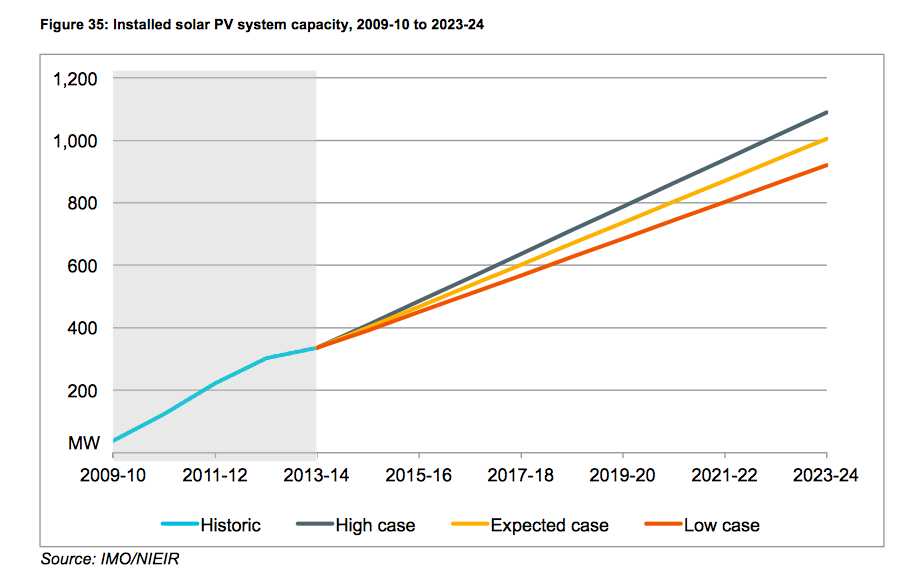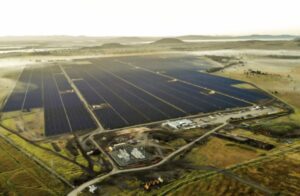The operator of the Western Australia grid has given a more upbeat outlook for demand than its larger eastern states counterpart, but has acknowledged the growing impact of rooftop solar on market operations.
The WA Independent Market Operator predicts that demand will increase around 1.8 per cent a year over the next decade, compared to a forecast of just 0.3 per cent growth from the Australian Energy Market Operator, which operates the grid in the eastern states.
However, IMO has acknowledged that its growth forecast could be reduced dramatically if the uptake of rooftop solar continues to be strong, and if energy efficiency and demand response mechanisms continue to be influential.
Indeed, the forecast growth in peak demand, could be cut from 2.1 per cent a year, to 0.8 per cent, or the equivalent of 710MW. That scenario is based on the assumption that one third of its customers have rooftop solar in 2023/24.
It says that the 336MW of rooftop solar already installed (as of January) in the state’s main grid, know as the South West Interconnected System (SWIS) has already shifted the afternoon peak from around 4pm to 5.30pm.
Not only that, rooftop solar has actually cut the peak over the last few years.
“Historically, peak demand in the SWIS has typically occurred in February, when commercial customers, schools and universities have returned from the summer break,” it says.
Now it occurs in January, and solar PV has cut demand throughout the day compared to other peak years. The ultimate peak had been deferred to the 5:30pm trading interval “largely because of the effect of solar PV generation offsetting demand during the afternoon.”
In its “expected outcome”, IMO says rooftop solar will continue to grow at around 5.8MW a month, as around 1,600 households install systems of at least 3.5kW each.
It says the installation rate could be higher, and under its expected and high scenarios, the amount of rooftop solar more than trebles to over 1GW by 2023/24. (see graph below). This would reduce peak demand by up to 300MW by 2023/24.
However, IMO also modelled a “high customer response” scenario, in which “saturation” of rooftop solar would occur within 10 years within the SWIS. It recognises that electric vehicle and battery storage could also have an influence, but did not model these.
Under this scenario, rooftops systems would be installed on 75 per cent of all suitable residential dwellings (defined as all detached dwellings and semi-detached dwellings, as well as 30 per cent of other dwelling types) and 90 per cent of all commercial properties.
The average system size would reach 3.5kW for residential (from 1.5kW now )and 26.5kW for commercial properties.
IMO says this level of uptake implies around 30 per cent of all customers could have rooftop solar within a decade. It does not consider this unreasonable because this would still reflect
“In light of ongoing technological advances and expected further increases in electricity prices, the drivers of customer demand response are not likely to abate in coming years,” it notes.
The difference between the expected case and high customer response scenario indicates a range of possible outcomes over the forecast period.
IMO says currently 15 per cent of residential customers have rooftop solar, helping reduce average electricity use (from the grid) per household by 6.6 per cent between 2007-08 and 2012-13.
Like AEMO, the IMO has also dramatically reduced its forecasts over recent years. This graph below indicates that solar and other factors could reduce the anticipated peak by one third from estimates of five years ago.
Because of that, and the fact that there is no need for new capacity for another 5 years, WA is putting its much criticised capacity mechanism on hold for another 18 months.
Some plants have been built – using fund from the mechanism – but have never been switched on. Its reserve capacity auction has been suspended, and it will now publish its next “opportunities” document for another year.
Of interest to those watching the deliberations of the Abbott government’s RET review panel closely, this graph will be of interest, forcasting the range of scenarios for energy consumption over the coming decade.
WA currently sources just under 10 per cent of its electricity from renewable sources.










